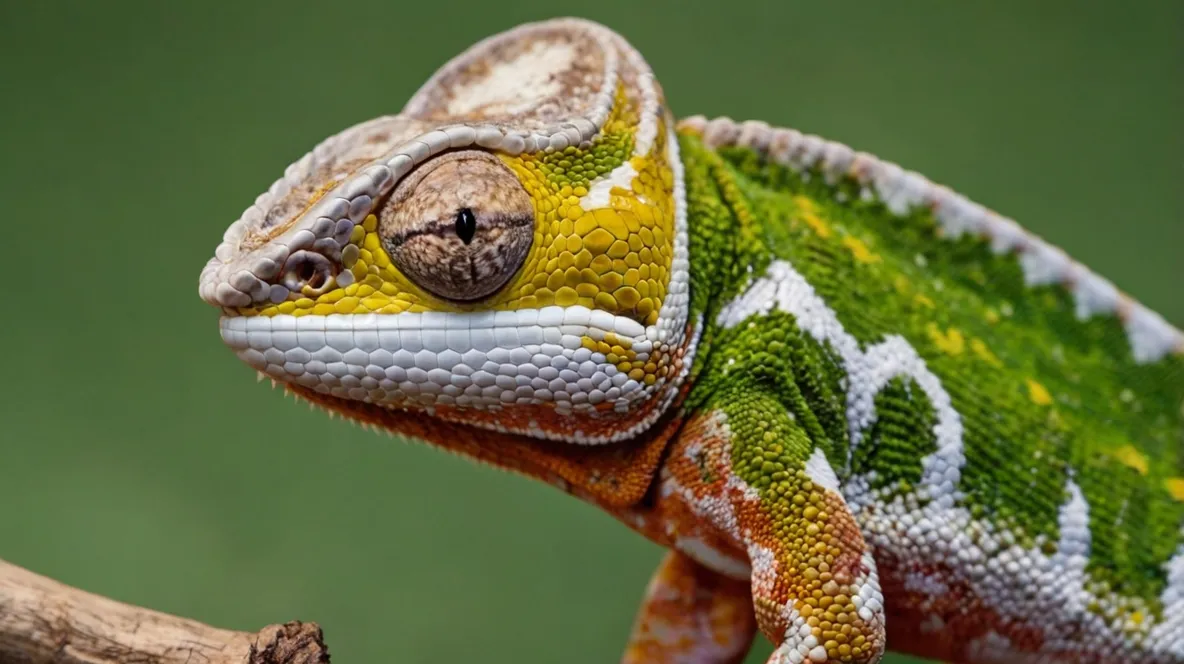Chameleon Interaction & Handling Guide
Interacting With Your Chameleon
Chameleons are fascinating creatures renowned for their color-changing abilities, but they are generally considered display animals rather than pets for frequent handling. They stress easily, and interaction should prioritize their comfort and well-being. “Training” typically involves habituating them to your presence and necessary interactions like feeding or enclosure maintenance.

Understanding Chameleon Behavior
Chameleons are easily stressed by perceived threats, including handling.
- Observation is Key: Most enjoyment comes from observing their natural behaviors in a well-designed enclosure.
- Stress Signals: Learn to recognize signs of stress: dark or drab colors, puffing up the body, hissing, gaping (open mouth), closing eyes, or trying to flee.
- Solitary Nature: They are generally solitary and do not seek social interaction like mammals.
- Handling Intolerance: Most chameleons tolerate handling poorly. It should be minimal and purpose-driven (e.g., health checks, moving for cleaning).
Essential Acclimation
Allow your chameleon ample time to adjust to its new home before attempting any interaction.
- Hands-Off Period: Leave your chameleon undisturbed for the first 1-2 weeks, providing only essential care (food, water, misting).
- Quiet Environment: Ensure the area around the enclosure is calm and free from loud noises or sudden movements.
- Observe from Distance: Watch your chameleon’s behavior to learn its routines and favorite spots without causing stress.
- Security First: This period helps the chameleon feel secure, which is foundational for any future positive interaction attempts.
Building Trust Slowly
Habituate your chameleon to your presence gradually.

- Quiet Presence: Spend time near the enclosure daily, moving slowly and speaking softly. Let the chameleon observe you without feeling threatened.
- Routine Maintenance: Perform daily tasks like misting or spot cleaning calmly and predictably.
- Hand Feeding: Offering favorite insects (like hornworms or silkworms) via tongs or a feeding cup can create positive associations. Move slowly and let the chameleon come to the food.
- Hand in Enclosure: Occasionally rest your hand inside the enclosure (away from the chameleon) for short periods during maintenance, allowing it to get used to your static presence.
Minimal and Necessary Handling
If handling is required, prioritize the chameleon’s safety and minimize stress.
- Purposeful Handling: Only handle when necessary (health checks, weighing, relocating). Avoid handling for casual interaction if the chameleon shows stress.
- Slow Approach: Approach slowly from the side or below, never directly from above.
- Offer a Perch: Encourage the chameleon to walk onto your hand or a sturdy stick/branch rather than grabbing it. Gently slide your hand under its belly for support if needed.
- Full Support: Ensure its feet have a secure grip on your hand or arm. Avoid squeezing.
- Keep it Short: Limit handling time to a few minutes, especially initially.
- Low and Safe: Handle over a soft surface or inside the enclosure to prevent injury from falls.
Recognizing Stress During Interaction
Stop interaction immediately if your chameleon displays signs of significant stress.
- Color Changes: Darkening, showing bright stress colors (varies by species).
- Physical Signs: Puffing up, flattening body, gaping mouth, hissing.
- Behavioral Signs: Frantic attempts to escape, freezing, closing eyes tightly.
- Retreat: If stress signals appear, calmly and slowly return the chameleon to a secure perch in its enclosure. Trying again later is better than forcing interaction.